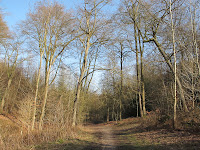A short break in the morning showers gave us time to make a hasty dash up the hill to the Feve station so we were untroubled by the heavy shower that began shortly after our arrival at the station.
A slightly larger train than the one that dropped us off 24 hours ago duly arrived and we set off on the next leg off our adventure. When we arrived in Ribadeo we were all herded off the train to wait a short time for another more modern train to arrive to take us on for the rest of the journey, stepping forward about 50 years in train design.
Just over four hours after leaving Luarca,we arrived in Ferrol where the guide book had helpfully informed us that the Renfe station shared the same building as the Feve station. Even that made it sound grander than it was in reality; through the barrier and one door and we were at the ticket counter ready to purchase seats for the next stage to A Coruna. Because everything was running to schedule we even had enough time to grab a quick snack and drink from the station café.
We arrived at A Coruna late in the afternoon to find that the station was a good 20 minute walk from the historical centre. There was still plenty of to time to wander through the pedestrianised area, down to the old castle/fort on the waterfront and across the peninsula to the Tower of Hercules. This is supposedly one of the oldest lighthouses in the world dating back to Roman time. It is entirely original with only six new walls and eight new lights.
A Coruna is known as the 'City of Glass' due to the wall-to-wall glazed verandas on the buildings facing the harbour. It certainly gives an unusual and stunning effect with the sun shinning on the façades.


















































